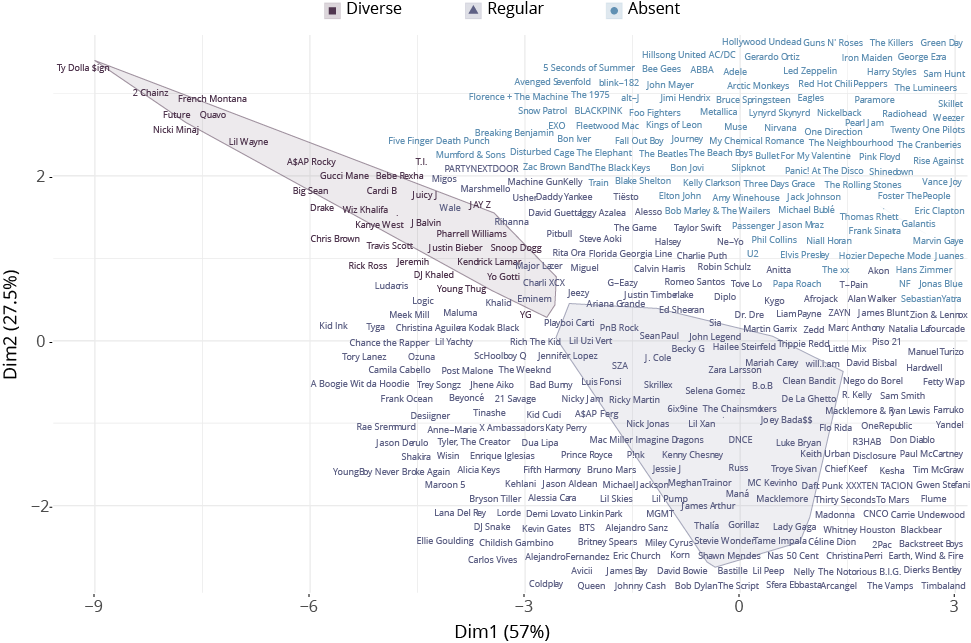
Clustering Process
After calculating the topological metrics of each artist, we applied a clustering algorithm to group those with similar topological features. In this way, we find groups of artists with similar topological values and, consequently, similar collaboration profiles. Here, we use K-means clustering algorithm, which is the simplest and most commonly used cluster method. One of the first steps when using this algorithm is to define the number of clusters to work with. We use a common solution to identify the optimum number of clusters: the Elbow method. According to the chart below, the curve decreases as k increases, but it can be seen a bend (or "elbow") at k = 3. This bend indicates that additional clusters beyond the third one would negatively affect the results by increasing k. Therefore, k = 3 is our optimal number of clusters.
